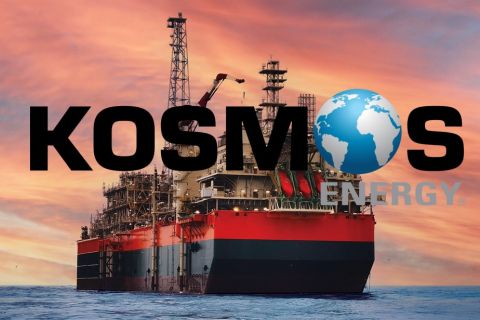Oil and gas producers’ shareholders are back to wanting inventory, after several years of focusing nearly exclusively on cash returns, according to industry members.
“It’s the biggest investor question today: ‘How long can you run the machine?’” one told Hart Energy.
Arun Jayaram, E&P analyst for J.P. Morgan Securities LLC, wrote in mid-March in a Top 10 “learnings from earnings” report that inventory renewal and M&A made his shortlist.
“Post the 2020 downturn, most investors were keenly focused on free cash flow generation and shareholder-return frameworks.”
But “over the past few months, we have observed that U.S. shale inventory depth has come back into focus as most E&P business plans converged to maintenance or low-production growth scenarios.”
'Resource maturity'
Subash Chandra, analyst with Benchmark Co., dived into Range Resources Corp.’s reserves report, finding some signs of “resource maturity.”
For example, the Appalachian operator identified 367 future-well locations, representing 7.1 trillion cubic feet equivalents (Tcfe) of proved reserves or 19 billion cubic feet equivalents (Bcfe) per location. “This compares to 360 locations, representing 7.4 Tcfe or 21 Bcfe [per well] last year,” Chandra wrote.
There are resources and there are economics, though, he acknowledged. “Inflation added to costs, but there was a 10% reduction in EURs [estimated ultimate recovery] for PUDs [proved undeveloped reserves]. Not a definitive sign, still, as PUD locations are picked for capital efficiency rather than maximum EURs.”
Appalachian growth remains constrained too. Mountain Valley Pipeline is completed but for the last 20 miles, waiting on federal clearance. Department of Energy Secretary Jennifer Granholm said of federal permit hurdles, while at CERAWeek by S&P Global, “It’s crazy.”
Jayaram noted that, while some operators have simply bought more PUDs, these weren’t on a large scale in 2022. Instead, “most operators have continued with bolt-on opportunities or acreage trades to bolster their inventory depth or high-grade their current inventory base.”
Productivity worries
Among bolt-ons, Ovintiv Inc. added some 450 net locations for $286 million, Jayaram said. “This was twice the number of net wells drilled in 2022.” Also, Magnolia Oil & Gas Corp. added to its Giddings Field, Texas, portfolio for $78 million in multiple deals.
Prospecting via delineation is underway, though, he added. Among them, Hart Energy reported in March of operators’ work on the Barnett, Woodford and Meramec in the Permian Basin; the Austin Chalk in far South Texas; the Bossier/Haynesville northeast of College Station, Texas; the Utica oil fairway in Ohio; and other wildcatting.
Bob Brackett, analyst with Bernstein Research, reported after earnings calls, “We looked at every county, large operator and key basin, and in total they convey a negative picture.
“Productivity hit a plateau from 2017 to 2019.” That shifted since then to drilling locations with the highest returns. “Then in first-half 2022, underlying rates crystallized well below pre-pandemic levels at a rate more sudden than we contemplated,” Brackett wrote.
Thus, “it is unsurprising that E&Ps are increasingly pursuing inorganic growth and refrac opportunities nor that the hottest segment in shale is reservoir stimulation.”
Among many possible reasons for lower-quality wells is “lower-quality” drilled but uncompleted (DUC) completions. Perhaps “2017 was as good as it got,” he wrote.
Among his forecasts: a half-million-barrel lift in U.S. oil production this year, but a plateau in three to five years. Maintenance D&C [drilling and completions] will rise “as wells worsen.” The DUC count, which has declined to fewer than 5,000, “will return to builds.”
Meanwhile, shale operator discipline “is holding,” and “E&Ps are approaching completions with the same level of discipline as drilling,” Brackett wrote.
Jayaram reported, “Given worries about well-productivity degradation across U.S. shale, we expect investors to continue to pay close attention to operational execution, which should benefit select operators.”
Britt Harris, president and CEO of the University of Texas/Texas A&M Investment Management Co. (Utimco), noted at CERAWeek that many large, private investors pulled back in the past year on oil and gas investing.
But as soon as they withdrew, oil prices soared and other stocks plunged. “So I think that [position] has weakened a little bit,” he said.
Josh Viets, Chesapeake Energy Corp. COO, said there are plenty more U.S. reserves than currently economic. Continued advancement in technology may double or triple the more than 1,000 Tcf of current resource estimates.
To grow, though, the gas industry needs mega-billion-dollar investments and political administrations that don’t pose investment-commitment risk, he said.
“If there’s no certainty that those returns can be generated on investment, that doesn’t happen.”
Recommended Reading
Some Payne, But Mostly Gain for H&P in Q4 2023
2024-01-31 - Helmerich & Payne’s revenue grew internationally and in North America but declined in the Gulf of Mexico compared to the previous quarter.
Uinta Basin: 50% More Oil for Twice the Proppant
2024-03-06 - The higher-intensity completions are costing an average of 35% fewer dollars spent per barrel of oil equivalent of output, Crescent Energy told investors and analysts on March 5.
In Shooting for the Stars, Kosmos’ Production Soars
2024-02-28 - Kosmos Energy’s fourth quarter continued the operational success seen in its third quarter earnings 2023 report.
M4E Lithium Closes Funding for Brazilian Lithium Exploration
2024-03-15 - M4E’s financing package includes an equity investment, a royalty purchase and an option for a strategic offtake agreement.
California Resources Corp. Nominates Christian Kendall to Board of Directors
2024-03-21 - California Resources Corp. has nominated Christian Kendall, former president and CEO of Denbury, to serve on its board.






